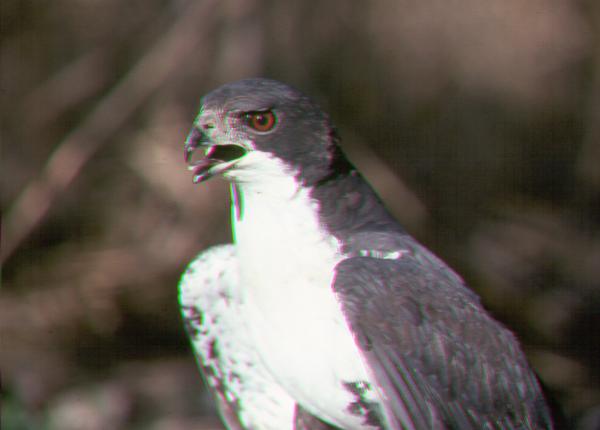Did You Know?
- The Black Goshawk is also known as the Black Sparrowhawk or the Great Sparrowhawk.
- There are two recognized subspecies of the Black Goshawk
How The Peregrine Fund is Helping
Though The Peregrine Fund is not working directly with Black Goshawks our conservation efforts through habitat protection, education, and community outreach extend to all raptor species. We also supply literature to researchers from our avian research library, which helps scientists around the world gather and share important information on raptor conservation. Our Global Raptor Information Network gives raptor researchers tools to more efficiently conduct their own studies while contributing to a global program. GRIN also provides citizen scientists a way to participate in raptor science and conservation.
Where They Live
The Black Goshawk is found mainly in sub-Saharan Africa. It makes its home in several different forest types, including montane and riparian woodland and exotic tree plantations, including eucalyptus and pines. It seems to particularly favor habitats with large trees. However, it can also be found in and near urban environments. If you are ever in Black Goshawk territory, be sure to search high in trees, where it often perches.
Why They Need Our Help
This goshawk is categorized as a species of Least Concern. In fact, its populations are expanding, particularly in southern Africa, as exotic trees plantations are becoming more common.
What They Eat
The Black Goshawk is a skilled bird hunter. It chases after birds in low, fast flights from a perch. Because of the extreme sexual size dimorphism in this species, there are sexual differences in prey selection. Males typically hunt dove-sized birds, and the much larger females take game bird species, including francolins and even guineafowl. It has also been known to hunt other birds of prey including hawks and owls! This goshawk will also prey upon small mammals, such as rodents, and snakes.
Nest, Eggs and Young
Black Goshawks construct large stick nests, high in a tree, often in eucalyptus or other exotic species. Unlike most accipiters, this species often re-uses the same nest year after year. To make sure their nest is in good shape each time they use it, they add more material each year. Because of this, their nests can grow to be quite large!
The female will lay around 3-4 eggs, and she will be in charge of incubating and otherwise caring for them for between 37-38 days. While the female is busy with her incubation duties, the male is out hunting enough food to feed himself and the females. After the young hawks hatch, they will grow quickly. When they are between 37–50 days old, they will be ready to fly from the nest for the first time.
Black Goshawk and The World Center for Birds of Prey
The World Center for Birds of Prey offers fun ways to learn about birds of prey. Interactive activities, tours, interesting videos and a children's room with activities from coloring sheets to quizzes to costumes are all available for our guests. We also have knowledgeable, on-site staff to answer any questions you may have about Black Goshawk or any other bird of prey.
References:
Global Raptor Information Network. 2021. Species account: Black Sparrowhawk Accipiter melanoleucus. Downloaded from http://www.globalraptors.org on 1 Dec. 2021
Kemp, A. C. and G. M. Kirwan (2020). Black Goshawk (Accipiter melanoleucus), version 1.0. In Birds of the World (J. del Hoyo, A. Elliott, J. Sargatal, D. A. Christie, and E. de Juana, Editors). Cornell Lab of Ornithology, Ithaca, NY, USA. https://doi.org/10.2173/bow.blagos1.01









